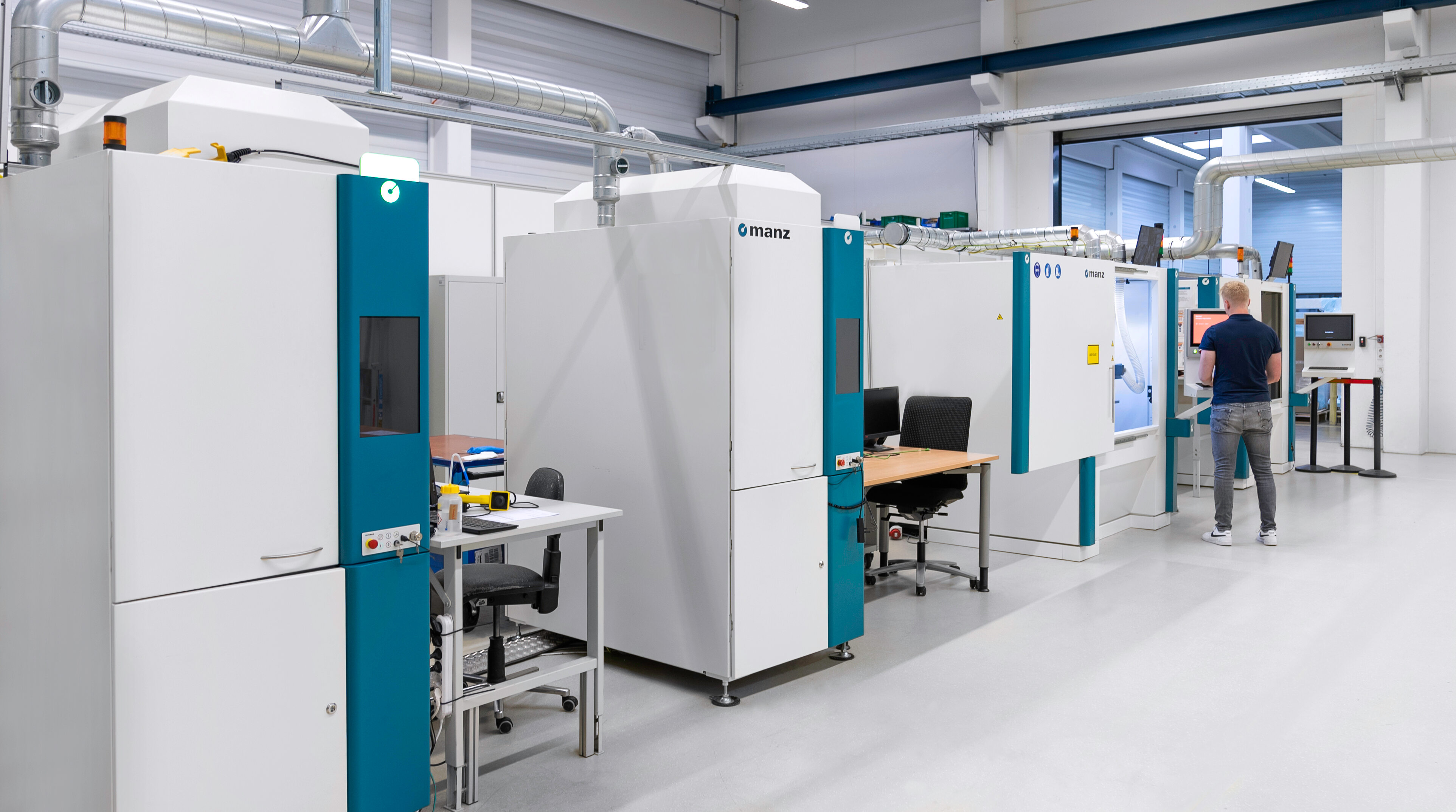09/14/2022 10:00:00 CEST, Reutlingen Manz enables manufacturing companies to test laser welding processes and produce samples at the new Laser Application Center (LAC) | Companies can check the best joining technology for new products in terms of mechanical strength, welding time, cost and quality
As a globally active high-tech equipment manufacturer with a comprehensive technology portfolio, Manz is, among other things, a pioneer in the development of innovative laser applications. In this context, the portfolio comprises numerous micromachining laser processes for a wide variety of applications. These include cutting, drilling, structuring, or welding of different materials such as glass, metals, ceramics, fabrics, and plastics, as well as ablation of layers such as compound semiconductors, metals or dielectric layers, even on large surfaces. Especially in the field of laser welding, the high-tech mechanical engineering company has held a leading position for years.

The key to success: innovative laser welding processes
Laser welding is a preferred process in numerous industries for joining different metallic materials permanently and reliably. The challenge for companies is that CAD models and simulations cannot reliably determine which laser welding process is most suitable for the required material combination. For fast and reliable product development, it is therefore crucial to test and define key processes such as laser welding at an early stage.
With the Laser Application Center (LAC) in Reutlingen, Manz now offers companies a unique production environment for testing and optimizing various laser welding processes and material combinations under real conditions and for creating samples of the respective products. The production facilities at the LAC cover all common laser welding processes and laser sources. Manz categorizes the laser welding processes into four different processes:
- P1: Short pulse laser welding. Manz's P1 laser welding process uses pulsed IR laser beam sources in the nanosecond range. The laser beam sources have a very high peak pulse power of up to 10 kW with a low average power of 100 W to 300 W at the same time. Due to the minimal heat input, the P1 process is particularly recommended for thermally sensitive components.
- P2: Single-mode laser and local laser beam oscillation ("wobbling"). With Manz's P2 laser welding process, the depth and width of weld seams can be set independently in the micrometer range. The process uses single-mode laser beam sources. The laser beam is moved over the workpiece by means of a 3D scanner and high-frequency local modulation ("wobbling").
- P3: Multi-mode laser (IR) and special beam shaping. Manz's P3 processes are performed either in cw mode or also pulsed in qcw mode. The use of powerful multimode lasers in the infrared wavelength range and the latest beam shaping technologies cover a comprehensive range of welding requirements.
- P4: Frequency-doubled multimode lasers ("green" lasers). This process uses a laser with a wavelength of 515 nm, which is optimally suited for particularly high-quality requirements for copper joints of medium welding depths up to 0.7 mm.
Cross-industry application
The LAC's test environment offers companies an ideal opportunity to test and analyze in advance the appropriate laser welding application for their specific requirements. For example, they can evaluate the best joining technique in terms of mechanical strength, welding time, cost, and quality. Currently, the LAC is already being used by companies in the automotive and energy storage industries, for example, to develop processes for manufacturing battery cells and modules or to optimize existing production processes.
In addition to access the LAC, Manz also offers companies accompanying service packages. For example, Manz's laser competence team advises on the pre-selection of materials and processes, provides support for any necessary pre- and post-processing of the materials (such as cleaning before welding), and can conduct tests regarding quality if required. This includes, for example, monitoring of welding depth, process parameters and emissions. In addition, the team of experts assists with the analysis of the respective processes. This includes cycle time analysis of the individual welding processes and micrograph analysis. This enables companies to examine the weld seam at an early stage of development and find the optimum welding parameters, the optimum welding depth, and the highest pull-off strength.
"Laser welding is usually a critical moment in the overall process. Companies can already test this in the LAC during process qualification. With our offer, we help our customers to test and evaluate different materials and laser processes. In this way, we significantly shorten the development process of new products and accelerate the release for series production," says Sascha Gaiser, Technical Head LAC, Manz AG.
